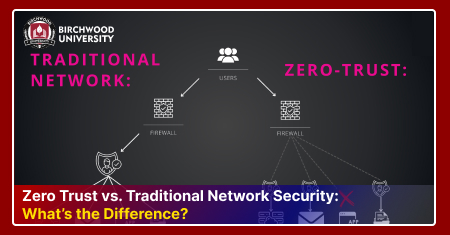Top 25 Project Ideas on Cyber Security
Oct 6, 2025
As data theft continues to increase, businesses are in significant need of cybersecurity experts to detect vulnerabilities and safeguard against various threats. If you are aspiring to enter the cybersecurity arena, engaging in hands-on project-based learning is an excellent way to distinguish yourself. Whether you are a seasoned software developer or just starting your cybersecurity journey, undertaking projects such as developing antivirus software or enhancing firewalls can significantly improve your skills and strengthen your resume. In this article, we will present 25 key cybersecurity projects designed to help you craft an impressive professional portfolio.
Easy Level Cyber Security Projects: Build the Basics
1. Digital Footprint Visualizer
Nowadays, people share so much of themselves online that they forget how much unnecessary information they are giving to the internet.This project will help you understand your online presence by creating a simple tool that shows where your data is appearing across different websites and social media platforms. This tool collects public information and then displays it visually so that one can see one's exposure. This project will definitely help society become more aware of digital privacy while supporting individuals in controlling their online identities.
2. Social Engineering Prevention Toolkit
Social engineering is one of the quickest ways that hackers use to fool people into providing their private data. This project aims to build a social engineering prevention toolkit, which is an excellent university project that requires a combination of your technical and social skills. This will help you recognise suspicious messages, fake emails, or misleading links. You can also add short quizzes, videos and an alert system to educate the audience. This will promote a smarter and safer online behaviour for everyone, especially for the newbies.
3. Password Strength Evolution Tracker
Weak passwords are still a major reason behind many cyberattacks. This project lets users track how their password habits improve over time. This tool will guide you with the actual feedback of your password, like its strength, and give potential suggestions for improvement, if required. This outcome promotes a strong password culture and motivates people to manage their accounts wisely.
4. Cyber Hygiene Education Game
With cybercrime on the rise, there is a clear need for creative educational tools. You can make learning about cybersecutiy doesn't have to be boring with this tool. Through this software or app, you can create a simple game for teaching online safety through fun challenges. This idea is great for schools and beginners who want to learn while playing. It will work because it turns security learning into an enjoyable experience.
5. Children's Online Safety Analyser
Children are spending more time online than ever before, but not all websites are safe for them. This project aims to build a web tool that scans websites or apps and checks if they collect unnecessary data or show harmful content. Please keep it simple, with clear ratings and warnings, blocking inappropriate search results based on the keywords or categories. It protects children's privacy and builds a safer online world for the next generation while teaching students the value of ethical technology use.
6. Dark Web Monitoring Assistant
Many people don't know that their data might already be circulating on the dark web. This project requires a student to work with networking concepts (Tor), data scraping techniques and secure data handling. By building this monitoring tool, students can contribute to the academic understanding of cybercrime trends, hacker tactics and illicit economies. When it finds something, it can alert users privately. It shows how cybercrime operates behind the scenes and how users can detect stolen data early.
7. Incident Response Automation Bot
To make this project, you first need to define a use case, such as a phishing attack or malware infection. Then, choose the programming language; Python is the most recommended one. Select a communication platform like Slack or Discord to send instant alerts. This protects businesses, reduces the financial cost of breaches, and safeguards the personal data of customers and employees.
8. Digital Legacy Protection System
Most people never think about what happens to their online accounts and crypto wallets when they pass away. You can design a secure platform that stores login details or preferences and lets trusted people manage them later. This lets users give a digital footprint after they're gone, ensuring their personal memories are shared or deleted according to their will instead of being left to the platform's terms of service.
Medium Level Cyber Security Projects: Test & Analyse
1. Smart IoT Device Threat Sandbox
Smart home devices are making our lives easier, but they have hidden security risks too. For this project, students have to create a virtual testing lab that keeps an eye on how safe these devices really are before connecting them to real networks. Through this project, students will have hands-on experience utilising Software-Defined Networking (SDN) principles to segment the sandbox from the main network, learning to simulate attacks, monitor behaviour and find weak spots.
2. Cyber Insurance Simulation Model
With cyberattacks rising, businesses now rely on cyber insurance to recover from data loss or system damage. This project shows how insurance models react when different types of attacks occur. You can design case studies, cost calculators, and risk factors that help people understand how protection and responsibility are shared between users and companies. Use tools like Honeyd or custom Python scripts to match devices' behaviour.
3. Digital Forensics Timeline Generator
When a cyberattack happens, investigators must rebuild the entire event step by step. Students must create a developing tool that reads digital logs and automatically arranges them into a timeline. Through this project, students apply their academic knowledge of operating systems, file structures and data carving techniques, all practically. This helps investigators in their work, making it easier and bringing justice when digital crimes occur.
4. Biometric Spoofing with Synthetic Skin
Biometric systems like fingerprint scanners are common, but they're not always foolproof. This project lets you analyse how fake or synthetic materials might trick these systems. During this project, your main aim should be to understand how to strengthen the system, not to find a loophole or break the system. This helps improve the security of millions of people who rely on fingerprints for payments, phones, and, of course, identification.
5. Honeypot-as-a-Service Platform
Create a honeypot, a fake system designed to attract cybercriminals, where you can collect real attack data and study how intrusions happen. Implementing this idea into a platform lets others test their defences safely. This tool helps society by providing better tools for studying hackers' methods, reducing high risks, and preparing cybersecurity students for professional defensive roles.
6. Voice Deepfake Detection Tool
We all know how much AI voice cloning is becoming popular nowadays; fake audio can easily mislead people. Creating a deepfake detection tool like this lets you compare voice patterns and flag manipulated recordings. You can even analyse tone, pitch and rhythm to identify differences between real and fake voices. This tool is perfect for creating awareness and protection against digital impersonation, which keeps the trust in communication stronger than ever and helps people verify what they hear.
7. Cyber Threat Intelligence Dashboard
Why not create a dashboard that gathers live attack data in one place and displays trends through charts and maps? It's a great project idea that helps users and organisations see what's happening and where the biggest threats come from. It makes the work easier for investigators, and it allows them to collect global security threats more easily and more quickly.
8. Blockchain for Identity Recovery
When someone's identity is stolen online, recovery can be hard. It provides practical application of cybersecurity principles like cryptography, decentralisation and access control. Design a system that verifies ownership without exposing private details. It gives people more control over their personal information and helps victims of data theft rebuild their online identity securely. This shows how blockchain can be used beyond cryptocurrency to protect individuals.
Advanced Level Cyber Security Projects: Research and Innovation
1. Cybersecurity and Brain-Computer Interfaces
Technology is moving toward connecting the human brain with machines, but this creates serious security risks, too. This project studies how signals between the brain and devices could be hacked or altered. Students can combine neuroscience and cybersecurity in one study while making this project, which is itself an innovative idea. This will enable students to prepare for the next generation of security challenges that mix human and digital worlds.
2. Quantum Hacking Simulations
Quantum computers are powerful enough to break some of today's encryption methods. This project can make us understand how quantum attacks work and how we can defend against them. This is mentioned within the advanced list because the future of data protection depends on staying ahead of this technology.
3. Cybersecurity in Space Communication Systems
It is essential to secure satellites that control communication, navigation, and defence systems, as they might be hacked down, so you must know how to prevent it. Students will learn about data transmission, encryption and space network protocols while protecting space missions, GPS systems, and global communications from cyber threats.
4. DNA Data Storage Security
Scientists can now store digital information in DNA, which also opens new security questions. This project might bring knowledge of how hackers might access or corrupt data stored in genetic material and how to stop it. This project is both futuristic and deeply scientific because of its safeguarding nature and data preservation technologies.
5. Cybersecurity in Human Augmentation Technologies
Whether it is smartwatches or medical implants, wearable and implantable devices are becoming very common. This project gives an individual a complete overview of how these devices can be hacked and knowledge of securing them. This can bring positive outcomes, such as fety for patients, athletes, and everyday users, and move towards smarter health technology that people can trust.
6. Self-Healing Network Architecture
Design a system that detects unusual activity, isolates the issue, and automatically repairs damage. Isn't it a great idea? Though it is advanced, this type of technology can save time and reduce damage in real-world attacks. This is the future of cybersecurity, where you don't need to depend on humans to protect your system. This would be perfect for businesses, schools, and hospitals, which are busy enough to address these problems. This will also inspire students to imagine networks that can think and respond on their own.
7. AI-Generated Threat Detection Simulator
Hackers use AI to create smarter attacks, but this project flips the idea and uses AI to predict and detect threats. Train a model on patterns of past attacks and simulate new ones to test how systems react. It's like allowing computers to learn from experience, spotting threats faster than humans. That's how cybersecurity and machine learning work together, and this way, you can stay one step ahead of attackers, making the online environments stronger and safer.
8. Emotional Manipulation in Cyber Campaigns
Many online attacks succeed not because of technology but because they manipulate people's emotions. This project tells you how hackers use fear, anger, or excitement to spread misinformation or scams. This tool will combine psychology with cybersecurity and let people think critically before reacting to any online content. It will analyse phishing messages, social media posts, and scam designs to understand the psychology behind them. This makes the society stronger against social manipulation that often fuels cybercrime.
9. Ethical Guidelines for Offensive Cyber Education
Create an easy-to-use interface app or software where you create a set of rules or guidelines for university students to teach them ethical hacking. Through this, students will study laws, real cases, along with the moral boundaries. This project promotes responsible cybersecurity education that prepares students to protect, not harm, anyone.
Conclusion
These projects provide an opportunity for MS in cybersecurity scholars to apply conceptual understanding to real-world challenges. This will help strengthen your understanding of the cybersecurity world and enhance your competence in handling diverse cyber threats.






